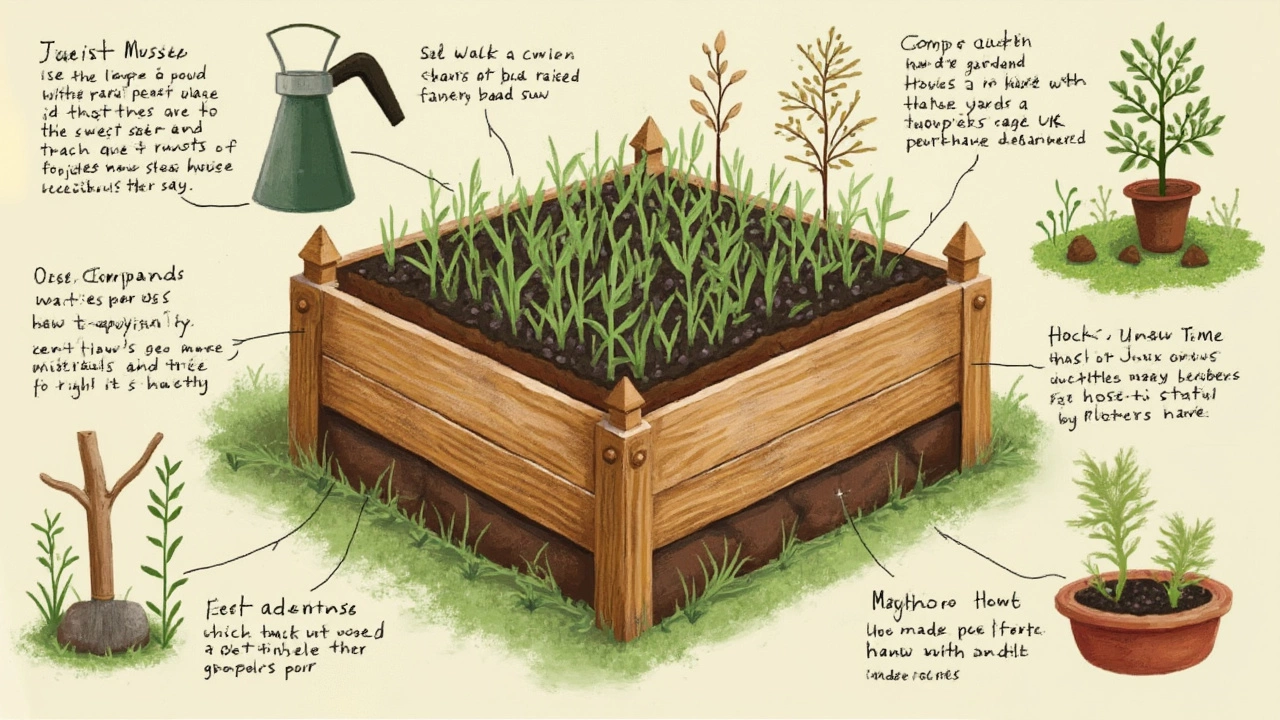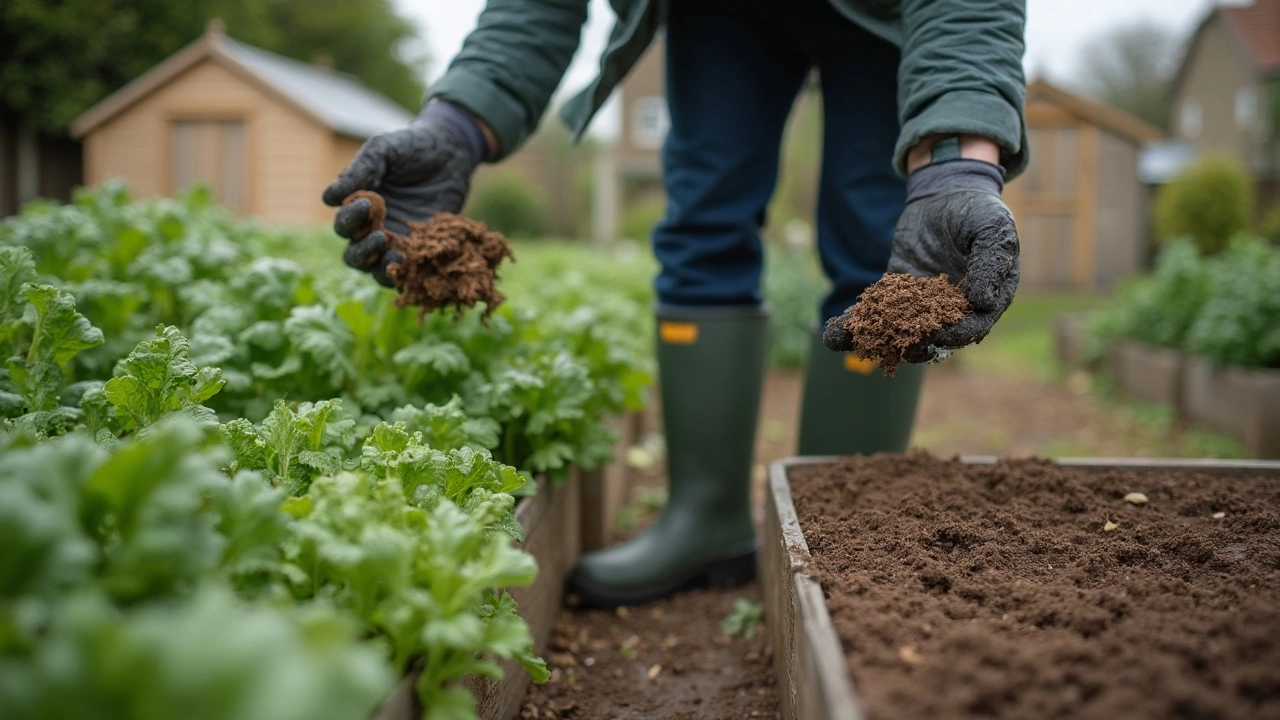Walk down any garden center aisle and you’ll spot bags of peat moss everywhere. It’s probably labeled as a “miracle ingredient” for garden beds, but does it really deserve a spot in your raised bed mix? Before you grab a bag, it helps to know what peat moss actually does and why some gardeners swear by it, while others give it a hard pass.
Peat moss comes from bogs, and it’s super famous for holding onto water. That matters a lot if you struggle with dry soil or want your plants to have steady moisture on hot days. But hang on—there’s more to the story. Peat moss changes the soil’s acidity, and it breaks down really slowly, so its effects stick around for a long time. These quirks can be helpful or annoying, depending on what you’re growing and how you garden.
Is peat moss the golden ticket for perfect veggies, or could it actually mess up your raised bed? You’re about to find out what the fuss is about and whether you should toss it in your cart—or leave it on the shelf.
- What Exactly Is Peat Moss?
- The Good: Benefits of Peat Moss in Raised Beds
- The Bad: Downsides and Environmental Concerns
- Smart Alternatives and How to Use Peat Moss Wisely
What Exactly Is Peat Moss?
Peat moss is basically a natural material made up of partially broken-down plants, mostly sphagnum moss, that sit in soggy bogs for thousands of years. Most of the peat moss you find in garden stores comes from cold, wet places like Canada, which produces about 80% of what’s sold in North America. Harvesters scoop it out of bogs, dry it, and then package it for gardening.
What makes peat moss so popular is how it acts as a soil booster. It absorbs water like a sponge and holds it really well, making it handy for dry spells or sandy soil. It’s also lightweight and fluffy, so it makes compacted soil easier for roots to grow in. That’s why gardeners often add it to raised beds, potting mixes, and seed-starting blends.
The pH of peat moss usually falls between 3.5 and 4.5, so it’s on the acidic side. This can be good or bad—if you’re growing blueberries or azaleas, perfect. If you’re growing veggies like lettuce, not so much, unless you balance it out with lime or compost.
Here’s a quick look at some facts about peat moss:
| Fact | Details |
|---|---|
| Main Source | Canadian bogs |
| Typical pH | 3.5 - 4.5 (acidic) |
| Water Holding | Up to 20 times its dry weight |
| Breakdown Time | Several years |
| Major Use | Soil amendment for water retention and improvement |
The whole harvesting process is pretty slow—peat layers grow back at only about 1 millimeter per year. That’s one reason there’s debate over using it in home gardens.
If you check the label when you buy peat moss, you’ll often see “sphagnum peat moss.” This isn’t live moss; it’s what’s left after years of decay in bogs. It arrives in stores dry and crumbly, ready to mix into your raised bed soil.
The Good: Benefits of Peat Moss in Raised Beds
Ask around, and you’ll hear plenty of folks bragging about how peat moss turned their tough clay or super-sandy bed into real growing gold. What’s the big deal? It all comes down to how peat moss changes up your raised bed's soil structure and water game.
The main win? Peat moss is incredible for holding water. It can soak up 10 to 20 times its own weight in moisture, so plants are less likely to dry out, even in summer. This is especially clutch if you don’t want to be out there watering twice a day. It’s like giving your soil a water reserve that slowly shares moisture with roots over time.
Peat moss also makes heavy or compacted soil looser and more crumbly. That means roots can push through easier, and you’ll see better growth all around — especially if you’re dealing with dense garden dirt. Plus, since peat moss has almost zero nutrients of its own, it won’t burn tender young plants or seedlings.
If you live where your water is a bit on the alkaline side, peat moss helps drop the pH, making soil more friendly for things like blueberries, strawberries, and potatoes. Some veggies and flowers just don’t thrive unless the soil is a little more acidic, and peat moss can nudge it right into the sweet spot.
Just to put the benefits in perspective, check out this quick comparison of what peat moss brings to the table:
| Benefit | How Peat Moss Helps |
|---|---|
| Water Retention | Retains up to 20x its weight in water |
| Soil Texture | Makes soil lighter and increases aeration |
| Acidity Adjustment | Lowers soil pH, great for acid-loving plants |
| Low Risk of Weeds or Diseases | Sterile and free from pathogens or weed seeds |
| Nutrient Burn | Safe for seedlings, since it lacks salts and nutrients |
One last perk: Peat moss is sterile. No weed seeds, no strange bugs, and no surprise fungi. So, if you’re starting your season with fresh new beds or worried about the stuff that might hitchhike in, peat moss keeps things clean and simple. For a lot of gardeners, that peace of mind tips the scale in its favor.
So when folks are trying to solve problems in their raised beds—from dry soil to compacted roots—peat moss is often the first thing they try. And for good reason. It’s reliable, widely available, and just plain works.

The Bad: Downsides and Environmental Concerns
Peat moss isn't just another bag of dirt. There are some real drawbacks, both for your garden and the planet. Let's get straight to why you might want to think twice before reaching for that bag.
First off, peat moss is not renewable in human lifetimes. It forms in bogs over thousands of years, but gets harvested way quicker than it can grow back. That adds up. In fact, Canada and Northern Europe are the world’s main sources, and even though Canada claims to harvest under 0.02% of its peatlands yearly, recovery is painfully slow.
The environmental footprint is hard to ignore. When peat bogs are mined, they release carbon dioxide—straight-up greenhouse gas—into the air. Peatlands actually hold more carbon than all the world’s forests. So, every chunk taken out for garden use means more CO₂ in the atmosphere. Here’s a quick breakdown of why it matters:
| Peatland Fact | Impact |
|---|---|
| Percent of global land area (peatlands) | 3% |
| Carbon stored (compared to forests) | Twice as much |
| Harvest recovery time | Centuries |
| Canada's peat harvest per year | <0.02% of peatland |
Okay, so besides the eco damage, what about plants? Peat moss is naturally acidic, with a pH around 3.5 to 4.5. If you’re throwing it into a raised bed and planning on growing veggies like beans or brassicas, that lower pH can cause headaches. Plants that need neutral or slightly alkaline soil may stall, making your harvest way less impressive. You’ll end up fiddling with lime to try and fix the acidity, which is more work and more cost.
One more pain: peat moss doesn’t add nutrients, just structure. If you’re looking for something to feed your tomatoes or peppers, peat moss won’t help much—it has almost no natural fertilizer. You’ll still need to add compost or slow-release food if you want healthy veggies.
- Slow-growing, not renewable in our lifetime
- Mining releases a lot of greenhouse gases
- Changes your soil pH—can be bad for some crops
- Contains very little in the way of nutrients
So, peat moss isn’t exactly guilt-free or foolproof for raised bed gardeners. If you like the idea of a planet-friendly, low-maintenance garden, it might be time to look at other options.
Smart Alternatives and How to Use Peat Moss Wisely
If you’re thinking about grabbing peat moss for your raised bed, stop and consider some options first. Peat moss isn’t the only way to boost your soil, and honestly, some alternatives are better for both your plants and the planet.
Coconut coir is near the top of the list. It holds water almost as well as peat moss but comes from the husks of coconuts, which are a renewable resource. Another winner: finished compost. Got a backyard bin or local compost source? That stuff is gold—packed with nutrients, improves soil texture, and keeps moisture where you want it. Leaf mold (not as gross as it sounds) is just decomposed leaves and is amazing for breaking up heavy soil.
If you want to avoid peat moss completely, check out this simple comparison:
| Soil Amendment | Water Holding | Renewable | Nutrient Value | pH Impact |
|---|---|---|---|---|
| Peat Moss | High | No | Low | Acidic |
| Coconut Coir | High | Yes | Low | Neutral |
| Compost | Medium | Yes | High | Neutral |
| Leaf Mold | Medium | Yes | Medium | Neutral |
But maybe you still want to use peat moss—just smarter. Here’s how to do it without overdoing it:
- Mix peat moss with other amendments like compost or coir. This way, you get moisture benefits without your soil getting too acidic.
- Don’t use peat moss as your main ingredient. Stick to about 10–20% peat moss in your soil mix.
- If you're growing veggies that hate acidic soil (like broccoli or beans), balance things out with some garden lime.
- Always wet peat moss before mixing it into your bed. Dry peat is stubborn and won’t blend well.
If you’re serious about long-term soil health, stick to compost and leaf mold as the backbone. For most backyard gardeners, these do the job without messing with the environment. Use peat moss only if you’re dealing with seriously sandy or dry beds, and combine it with other stuff for best results. You don’t have to give up moisture-loving soil just because you skip the peat—your raised bed will reward you for thinking bigger.
